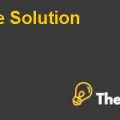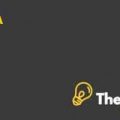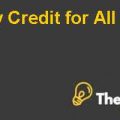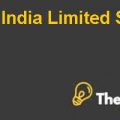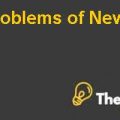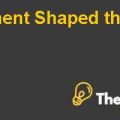Case Questions
Question 1
Why does Dow want to buy Rohm and Haas?
The acquisition of Rohm and Haas Company by Dow could be considered as a turning point in the history of each other companies. The combination of a advanced material business with a specialty chemical business would promise to cut the costs associated with the combined technologies, reduce the cyclicality and the earnings potential of the combined company would become more strong with a greater scope and global scale. Rohm and Haas Company seem to have a strong strategic and operational fit for the Dow Company.
The combination of both the companies would result in greater cost and growth synergies from the company’s strong industry channels, broad geographic reach and benefits in technologies and products. This acquisition deal by Dow was described as a jewel by Andrew Liveris, the CEO of Dow Chemical Company. The Dow Company will also have the opportunity to have an expanded network in an emerging market and this is going to create increased revenues for the company and many other growth opportunities along with the firm’s outstanding portfolios would be created through the synergies that would be created post acquisition.
Rohm and Haas Company also have the most experienced and a strong leadership team in the industry. The premise of the company’s vision is to be customer centric and customer focused by always promoting innovation throughout the organization. Furthermore, the portfolio of advanced materials and specialty chemicals of Rohm and Haas Company made it a tempting acquisition for Dow Company in the light of their current cyclical and low value chemicals. Lastly, according to the CFO of the company, Geoffrey Merszei, this deal was another crucial step and commitment of Dow Company to create long-term shareholder value.
Question 2
How much is Rohm worth?
The valuation of Rohm and Haas Company has been performed on the basis of the discounted cash flow method. The free cash flow forecasts based upon the original scenario and then the revised scenario assumptions has been provided in exhibit 7a. First of all the valuation of the Rohm and Haas Company has been performed based upon the original forecasts of the company. The calculations for the discount rate are already shown in exhibit 7b and the discount rate of 8.5% has been used and it seems to be an appropriate discount rate since it is based upon the long term assumptions. The terminal growth rate for the company is also provided which is 2% in exhibit 7a. Based upon the original forecasts the enterprise value for the company is $ 27157 million. The net debt calculations have also been performed which are as follows:
|
NET DEBT |
|
| Short Term Debt |
108 |
| Long Term Debt |
3,168 |
| Minority Interest |
239 |
| Cash |
204 |
| Rohm and Haas Debt |
3,311 |
The net debt of $ 3311 million has been deducted from the enterprise value to calculate the value of equity of $ 23846 million. The current outstanding number of shares for the company is 193.7 million and the price per share for Rohm and Haas is $ 123.11 per share. This shows a percentage premium of 37% over the offer price of $ 78 per share.
Similarly, the valuation of the company has also been performed on the basis of the revised forecast. The equity value of the company based upon the revised forecast is $ 5539 million. Based upon the outstanding number of the shares of 193.7 million, the price per share is $ 28.60 per share. These results in a negative percentage premium of -63% based upon an offer price of $ 78 per share. The calculations for the valuation of the company based upon both the forecasts is shown in the excel spreadsheet.Dow’s Bid for Rohm and Haas Case Solution
Question 3
What is the value of the synergies?
There are two types of synergies that would be realized as a result of the proposed acquisition which are the cost and growth synergies. In order to realize the cost synergies of 0.8 billion, a onetime cost of $ 1.3 billion will have to be incurred. These onetime costs would be incurred in the year 2009 if the acquisition takes place. These cost synergies are in present value terms. These synergies would be realized as a result of the governance and shared services, supply chain, manufacturing, purchasing synergies and work process improvements.........................
This is just a sample partial case solution. Please place the order on the website to order your own originally done case solution.

